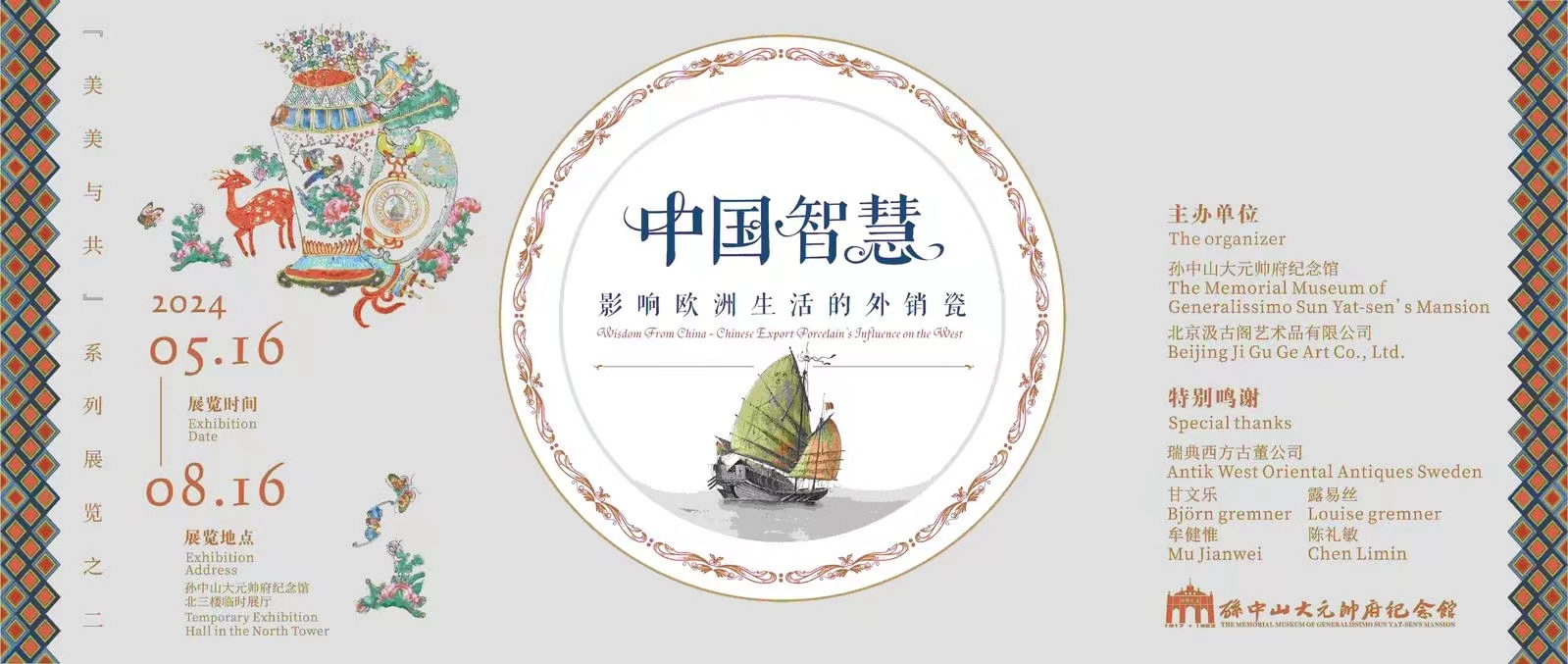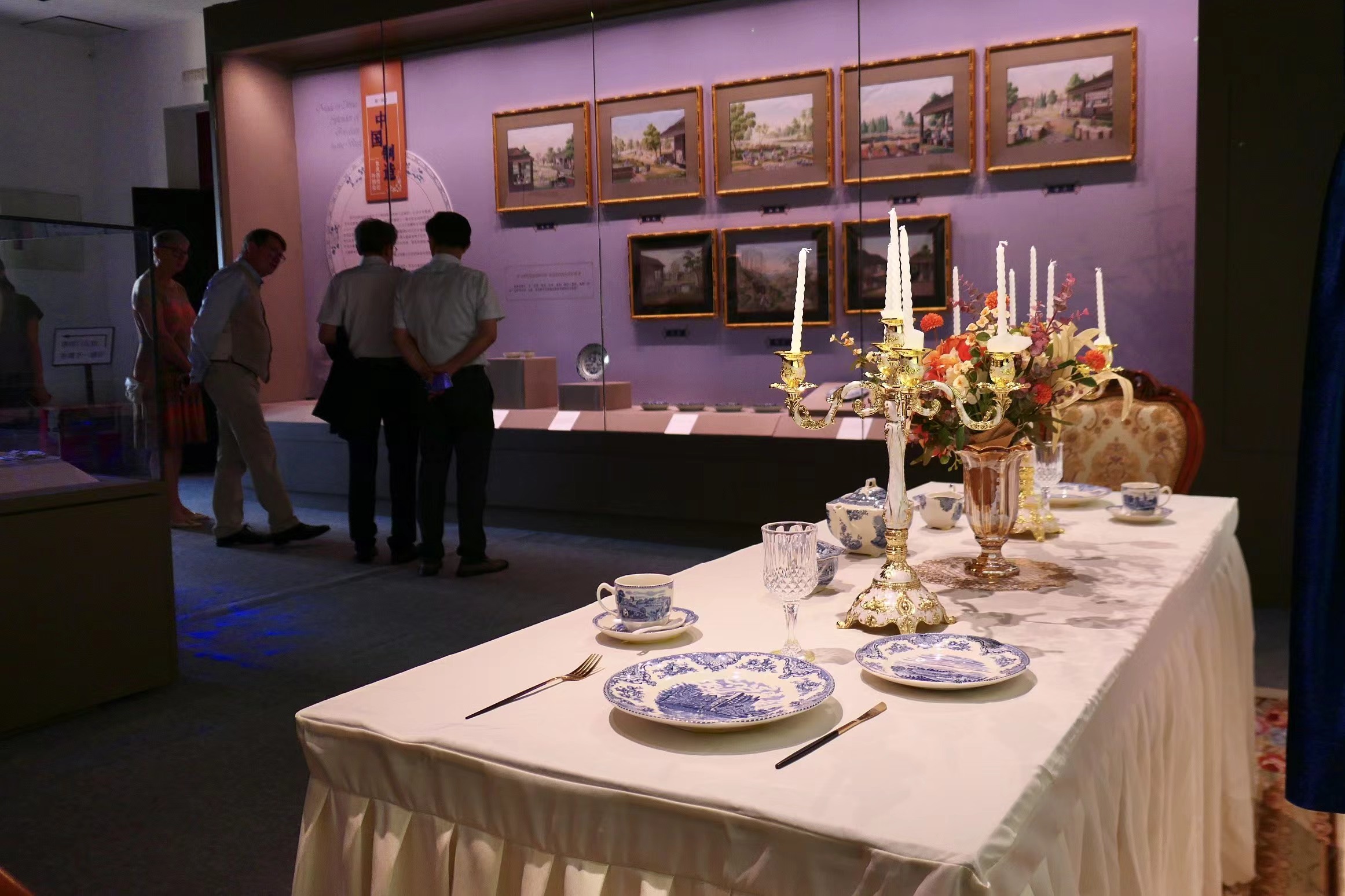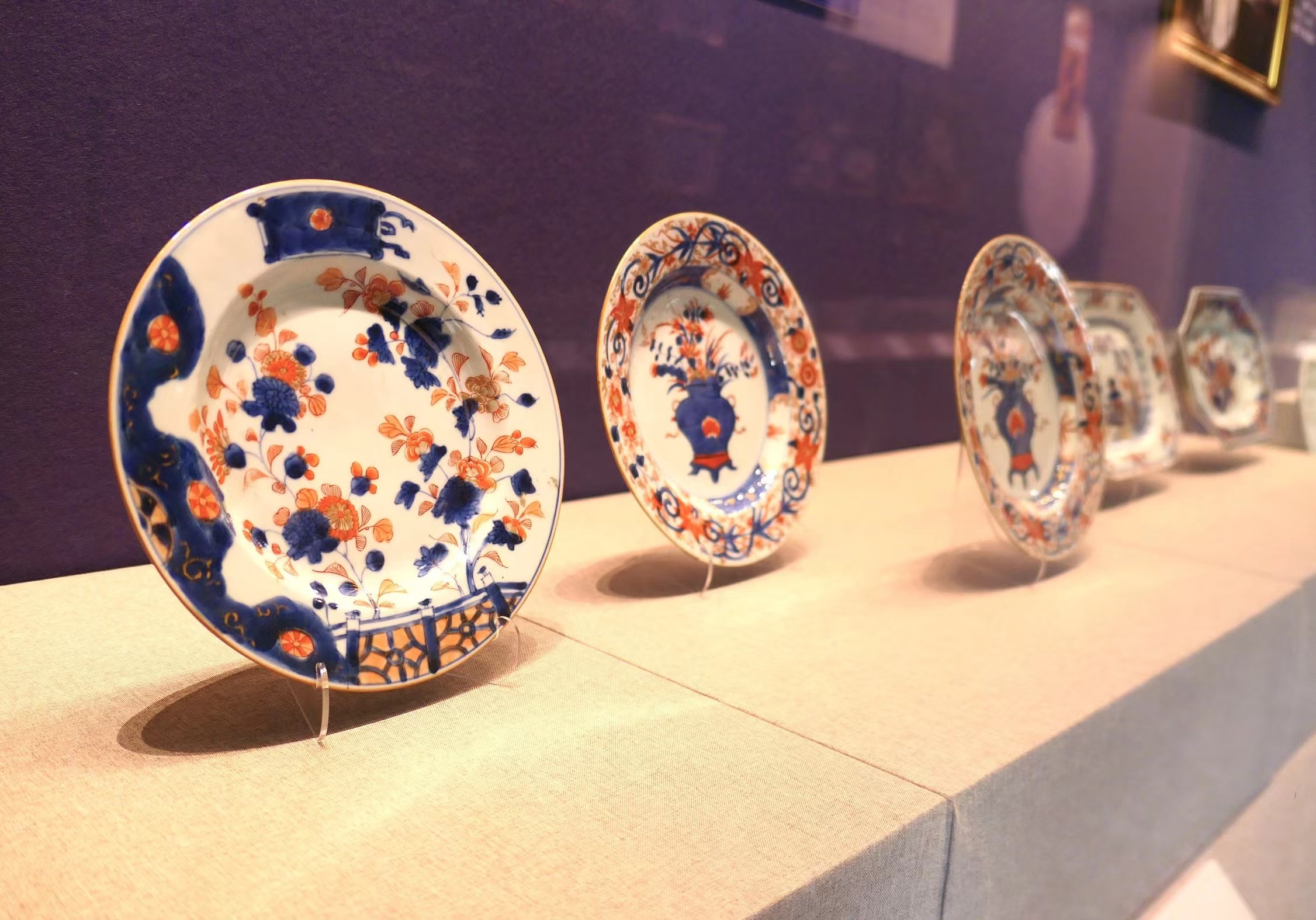
Blue and white plate with Guangzhou city map made in the Qianlong period of Qing Dynasty, Western custom "Anna" floral pattern famille rose porcelain plate made in mid-Qing Dynasty, blue and white plate with fighting rooster made in the Qianlong period of Qing Dynasty... These exquisite pieces of export porcelain are displayed in the showcase, showcasing the Chinese wisdom encapsulated within them, leaving spectators in awe.

On the eve of International Museum Day this year, the "Chinese Wisdom: Influence of Chinese Export Porcelain" exhibition opened on May 16th at the Sun Yat-sen Memorial Hall in Guangzhou. The exhibition features a total of 108 pieces/sets of Chinese porcelain that traveled across the seas, mainly from the Ming and Qing dynasties. Additionally, various porcelains produced in countries such as Sweden, England, France, the Netherlands, and Portugal are also on display. These porcelains encompass varieties such as blue and white porcelain, Kraak porcelain, Imari porcelain, Famille rose porcelain, and Guangcai porcelain.

Guangzhou is a shining pearl on the coast of the South China Sea. Between 1757 and 1841, Guangzhou, with its unique status as a "single port for maritime trade", stood out as an important gateway for the trade of goods between the East and the West. A large number of craftworks, including porcelain, that embody Chinese wisdom, traveled from here to the rest of the world, Europe and America in particular.
"Export porcelain from China not only changed the living habits of Europeans but also brought about an aesthetic collision between Chinese and European people, as well as the sharing of civilization." The curator of the exhibition introduced, "Since the Tang and Song dynasties, Chinese and foreign merchant ships have set sail from Guangzhou, carrying countless Chinese porcelain to Southeast Asia, West Asia, Africa, and the European continent. These export porcelain, like sparks of fireflies, like gentle breezes and light rain, with the beauty of soul-soothing colors, exquisite shapes, and unique patterns, adorned the lives of Westerners and deeply influenced and changed their lives."
The exhibition is divided into three parts: "Made in China: Chinese Export Porcelain Sold to the West," "Contribution of China: Export Porcelain and European Life," and "Influence of China: The Rise of European Porcelain."
Among them, the first part features eight large-sized watercolor paintings on paper, and a volume of export watercolor paintings on pith paper, introducing the production process of Chinese porcelain. There are also five oil paintings and a panoramic perspective view of Guangzhou City in 1759 (watercolor painting on paper). The second part introduces the influence of Chinese export porcelain on European dining habits and lifestyle aesthetics from the aspects of practical porcelain and decorative porcelain. Through the section "Falling in Love with Chinese Style," the history of Europeans customizing and processing Chinese porcelain is introduced, demonstrating the intersection, integration, and collision of Chinese and Western cultural aesthetic tastes amidst the prosperous development of Sino-Western trade.
Source | Yangcheng Evening News
















